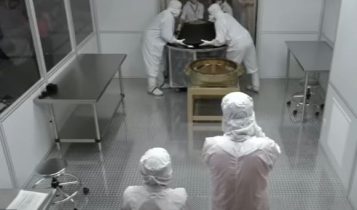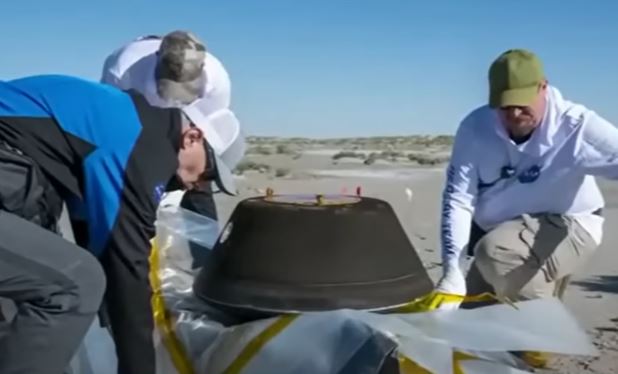NASA’s Asteroid Bennu Capsule Lid Unlocked After Struggle with Stuck Fasteners
For months, anticipation built among scientists eager to delve into the cosmic mysteries hidden within an asteroid sample collected by NASA’s OSIRIS-REx spacecraft during a billion-mile journey.
However, this excitement was dampened by two stubborn fasteners that held the key to unlocking the vast treasure trove of rocks and dust from the asteroid Bennu.
Pioneering the American Frontier of Asteroid Exploration in 2023
In a recent victory for space exploration, NASA technicians successfully overcame this challenge on January 10, marking a significant milestone in the ongoing mission.
The OSIRIS-REx spacecraft made history in September 2023 by completing the first-ever asteroid sample return mission in the United States. Landing in Utah, the spacecraft carried a return capsule containing precious material gathered from the surface of Bennu.
While 70.3 grams (2.48 ounces) were initially accessible from the exterior of the sampler head, dubbed the Touch-and-Go Sample Acquisition Mechanism (TAGSAM), the majority of the asteroid sample remained locked within the capsule due to two obstinate fasteners.
The team at NASA’s Johnson Space Center in Houston faced the daunting task of devising a solution to access the trapped material. The existing tools, approved for use inside the OSIRIS-REx glovebox to prevent contamination, were insufficient.
Undeterred, engineers and scientists at NASA worked tirelessly behind the scenes for months, leading to the development of two innovative multi-part tools.
NASA’s Asteroid Odyssey

These custom-fabricated tools featured bits made from a specific grade of surgical, non-magnetic stainless steel – the toughest metal approved for use in curation gloveboxes. Rigorous testing in a rehearsal lab ensured that the tools could apply the necessary torque without causing damage to the TAGSAM head or contaminating the samples.
Eileen Stansbery, division chief for ARES (Astromaterials Research and Exploration Science) at NASA, expressed admiration for the team’s dedication and innovation, stating, “We are all excited to see the remaining treasure OSIRIS-REx holds.”
The newly created tools not only had to meet the challenge of working with curation-approved materials to preserve the scientific value of the asteroid sample but also had to function within the confined space of the glovebox.
Nicole Lunning, OSIRIS-REx curator at NASA, highlighted the resilience of the curation team and their impressive work in overcoming the obstacles.
With the fasteners successfully removed, the team is now poised to complete the disassembly process, weigh the full sample, and capture ultra-high-resolution images before distributing portions of the asteroid samples to the scientific community for further research later this spring.
Asteroid Bennu, believed to be a primitive space rock dating back to the early days of our solar system, holds valuable insights into the formation and evolution of celestial bodies.
The analysis of samples collected from Bennu’s surface is expected to provide new clues about the history of our cosmic neighborhood, offering scientists an unprecedented glimpse into the mysteries of the universe.

